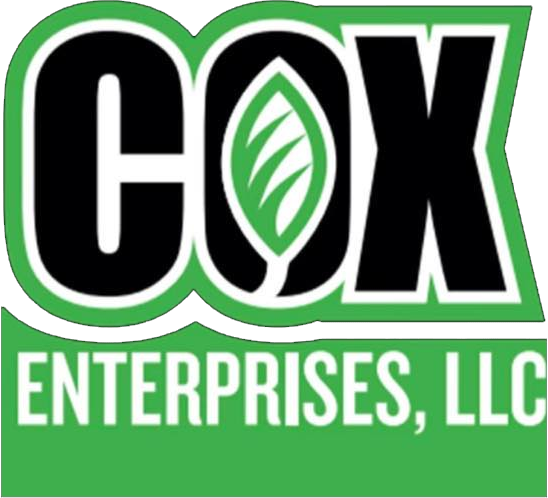Maryland summers can be brutal on residential lawns. As temperatures climb and rainfall becomes less predictable, even the healthiest spring grass can quickly turn brown and patchy without proper preparation. At Cox Enterprises, we understand the challenges homeowners face when trying to maintain lush, green lawns through the summer months. With some strategic preparation in spring and early summer, you can help your lawn withstand the heat and stay vibrant all season long.

Challenges of Maintaining a Healthy Lawn During Summer Heat
Maryland’s hot and humid summer climate creates several challenges for lawn care:
- High temperatures stress grass plants and slow their growth
- Increased evaporation rates lead to moisture loss
- Soil compaction from outdoor activities reduces water penetration
- Heat-loving weeds compete with grass for resources
- Pests and diseases become more active in warm conditions
According to research from the University of Maryland Extension, most cool-season grasses (common in our region) naturally slow their growth when temperatures consistently exceed 85°F. This dormancy response helps the grass survive, but can leave your lawn looking less than ideal during the hottest months.
The key to a resilient summer lawn is proactive care in spring and early summer. Let’s explore the essential steps for preparing your lawn to thrive despite the heat.
Watering Tips for Hot Weather
Water management is perhaps the most critical aspect of summer lawn care. Too little water leads to drought stress, while overwatering can promote disease and shallow root development.
Best Times to Water Your Lawn
Early Morning Watering (5-9 AM)
The optimal time to water your lawn is early morning for several reasons:
- Lower temperatures reduce evaporation loss
- Minimal wind means water reaches its target
- Grass blades have time to dry before evening, reducing disease risk
- Water pressure is typically higher in morning hours
Research shows that lawns watered in early morning use up to 30% less water than those watered during midday due to reduced evaporation.
Avoid Evening and Night Watering
While it might seem logical to water when it’s cooler, evening watering (after 6 PM) leaves grass blades wet overnight, creating ideal conditions for fungal diseases to develop. In Maryland’s humid climate, this risk is particularly significant.
How to Avoid Overwatering or Underwatering
Proper Watering Depth
The goal of effective watering is to moisten the soil to a depth of 4-6 inches, encouraging deeper root growth. This typically requires:
- Approximately 1-1.5 inches of water per week (including rainfall)
- Fewer, deeper waterings rather than frequent light sprinklings
- Adjustments based on soil type (sandy soils need more frequent watering than clay soils)
Signs of Underwatering
Watch for these indicators that your lawn needs more water:
- Footprints remain visible long after walking on the grass
- Grass blades fold in half lengthwise
- The lawn develops a blue-gray tint
- Growth slows significantly
Signs of Overwatering
Excessive water can be just as harmful as too little. Look for:
- Spongy feeling when walking on the lawn
- Fungal growth or mushrooms appearing
- Runoff occurring during watering
- Weeds like nutsedge thriving in the lawn
For more sustainable approaches to lawn care, visit our guide to low maintenance landscaping, where we discuss water-wise options for Maryland properties.
Smart Irrigation Strategies
Installing a smart irrigation system can significantly improve water efficiency and lawn health:
- Rain sensors prevent watering during or after rainfall
- Smart controllers adjust watering based on weather conditions
- Drip irrigation delivers water directly to plant roots with minimal waste
- Zone-based systems account for different sun exposures and soil conditions
At Cox Enterprises, our irrigation experts can design and install efficient systems tailored to your property’s specific needs.
Fertilizing and Soil Care
Proper soil nutrition helps your lawn develop deeper roots and greater resilience to summer stress. However, timing and product selection are critical for summer fertilization.
Choosing the Right Fertilizer for Summer
Slow-Release Nitrogen Sources
During summer, opt for fertilizers with:
- Lower nitrogen content than spring formulations (look for NPK ratios like 3-1-2 or 4-1-2)
- Slow-release nitrogen that won’t burn grass in hot weather
- Added iron to enhance green color without excessive growth
- Micronutrients that support root development and stress tolerance
Many Maryland lawns benefit from a light fertilizer application in early summer (May/June) before the most intense heat arrives. This supports root development without pushing excessive leaf growth that requires more water.
For tailored recommendations based on soil testing and specific grass types, review our early spring landscaping planning guide, which outlines the optimal year-round fertilization schedule.
Aerating and Improving Soil Health
Core Aeration Benefits
Core aeration involves removing small plugs of soil from your lawn, providing several benefits for summer lawn health:
- Reduces soil compaction that restricts root growth
- Increases oxygen flow to grass roots
- Enhances water penetration and nutrient absorption
- Creates space for organic matter to incorporate into soil
While spring and fall are ideal for aeration, a light aeration in early summer can be beneficial for heavily compacted lawns before the extreme heat arrives.
Soil Amendments for Summer Resilience
Consider these soil amendments to boost summer hardiness:
- Compost topdressing to increase organic matter and water retention
- Humic acid applications to improve soil structure and nutrient availability
- Gypsum for clay soils to improve drainage without changing soil pH
- Biochar to enhance soil microbial activity and water retention
pH Management
Maryland soils tend to be naturally acidic, which can limit nutrient availability. For optimal summer performance:
- Test soil pH in spring (ideal range for most lawn grasses is 6.0-7.0)
- Apply lime if pH is below 6.0, following soil test recommendations
- Use sulfur products if soil is unusually alkaline (rare in Maryland)
- Allow 2-3 months for pH adjustments to take effect before peak summer heat
Mowing and Maintenance Tips
Proper mowing practices can significantly increase your lawn’s heat tolerance by reducing stress and encouraging deeper root growth.
Proper Mowing Height to Protect Grass from Heat
Raise the Cutting Height
One of the simplest yet most effective summer lawn care strategies is adjusting your mower height:
- For tall fescue lawns: Maintain at 3-4 inches during summer
- For Kentucky bluegrass: Keep at 2.5-3.5 inches
- For fine fescues: Mow at 2.5-3 inches
- For perennial ryegrass: Maintain at 2.5-3 inches
Taller grass provides several heat-fighting benefits:
- Shades the soil surface, reducing evaporation and soil temperature
- Develops deeper root systems that access moisture further in the soil
- Outcompetes many low-growing summer weeds like crabgrass
- Requires less water to stay healthy
Follow the One-Third Rule
Never remove more than one-third of the grass blade length in a single mowing. During summer, this may mean more frequent mowing during growth periods and less frequent mowing during hot, dry spells.
For more on seasonal lawn care practices, check our landscaping trends article that highlights modern approaches to sustainable lawn management.
Removing Weeds and Debris
Strategic Weed Management
Summer is peak season for warm-season weeds in Maryland lawns. To manage them without stressing your grass:
- Hand-pull isolated weeds when soil is moist
- Spot-treat rather than broadcast herbicides during hot weather
- Apply pre-emergent products in spring to prevent summer annual weeds
- Use selective herbicides on cool mornings when temperatures are below 85°F
Regular Debris Removal
Keep your lawn free of debris that can damage grass and create disease-prone conditions:
- Remove fallen branches or tree debris promptly
- Clear lawn clippings if they form thick mats
- Manage leaf litter, especially in shaded areas
- Keep play equipment, furniture, and other items from sitting on grass for extended periods
Grass Blade Maintenance
Sharpen Mower Blades Regularly
Dull mower blades tear grass rather than cutting it cleanly, which:
- Creates larger wound surfaces that lose more moisture
- Increases disease vulnerability
- Results in a brownish lawn appearance
- Requires the grass to use more energy for recovery
Sharpen blades every 8-10 mowing sessions during active growing seasons.
Grasscycling Benefits
Unless grass is excessively long or wet, leave clippings on the lawn to:
- Return nutrients (especially nitrogen) to the soil
- Provide shade for soil surface
- Reduce fertilizer needs by up to 25%
- Add organic matter to improve soil quality
Summer Lawn Troubleshooting
Even with proper preparation, summer can bring specific challenges. Here’s how to address common issues:
Drought Stress Management
If water restrictions are in place or during extended dry periods:
- Allow cool-season grasses to go dormant (they’ll turn brown but will recover when conditions improve)
- Water deeply but infrequently to maintain root health
- Focus limited water on high-priority areas visible from the street or patio
- Consider applying wetting agents to improve water penetration
Dealing with Summer Lawn Diseases
Hot, humid conditions in Maryland can trigger diseases like:
- Brown patch: Circular brown areas in tall fescue and ryegrass
- Dollar spot: Small, dollar-sized brown spots throughout the lawn
- Pythium blight: Greasy-looking circular patches that appear in hot, humid weather
Management strategies include:
- Watering in early morning only
- Improving air circulation by pruning nearby trees and shrubs
- Applying fungicides preventatively in problem-prone areas
- Reducing nitrogen fertilizer during disease-active periods
Conclusion
Preparing your lawn for summer heat requires a proactive approach that ideally begins in spring and continues through early summer. By implementing proper watering techniques, appropriate fertilization, optimal mowing practices, and targeted maintenance, you can develop a lawn that withstands Maryland’s summer conditions while staying lush and green.
At Cox Enterprises, our lawn care professionals understand the unique challenges of maintaining healthy grass through Maryland summers. Our comprehensive lawn care services include customized irrigation solutions, professional fertilization programs, and regular maintenance tailored to your specific grass type and soil conditions.
Don’t wait until your lawn shows signs of heat stress. Contact Cox Enterprises today to schedule a consultation with our lawn care experts. Our team will assess your lawn’s specific needs and develop a summer-ready maintenance plan that ensures your grass stays healthy and vibrant throughout the hottest months of the year.

